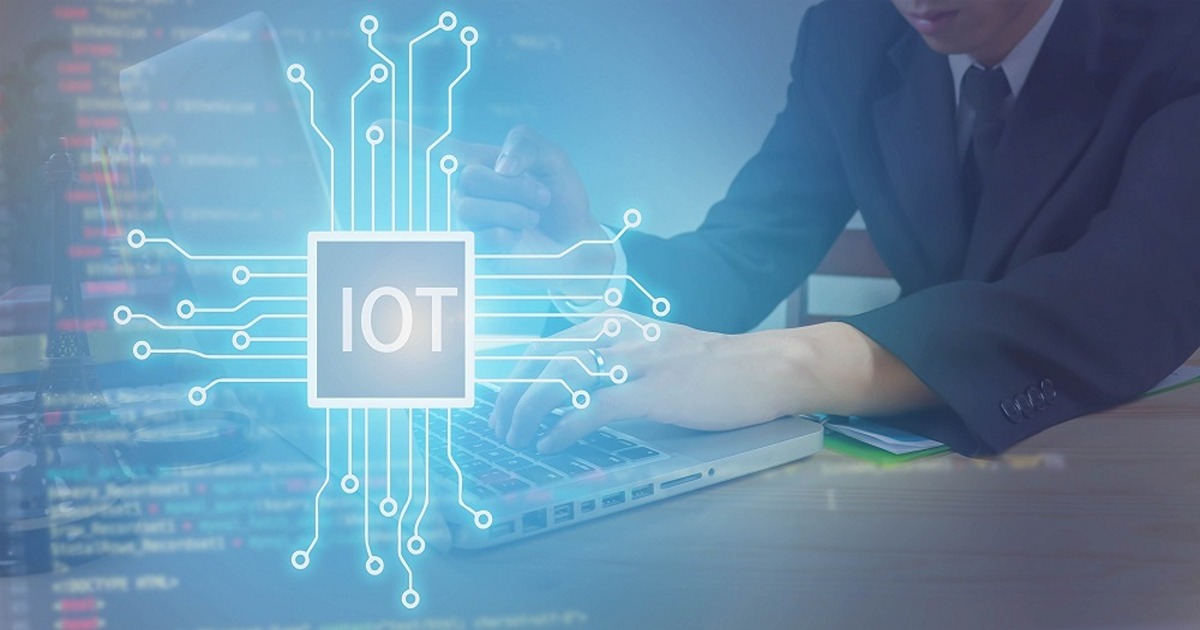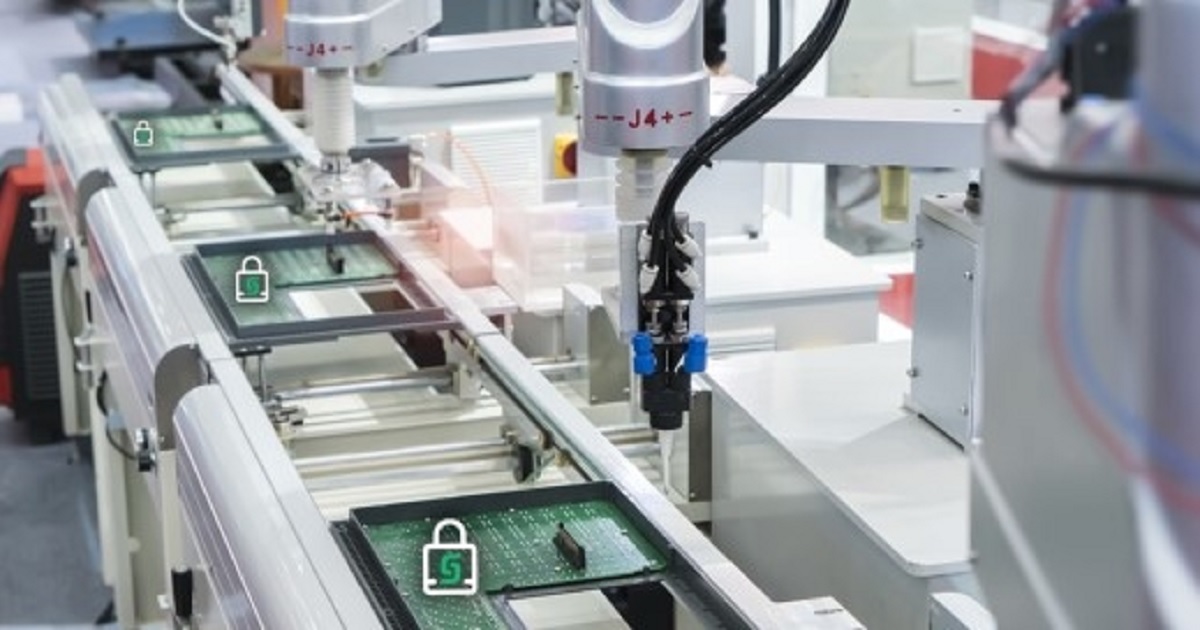
IoT Security
Article | June 28, 2023
Explore the world of readings on IoT security, to address complex cyber security challenges and privacy issues. It caters to a wide range of readers including industrialists, students & enthusiasts.
The Internet of Things (IoT) has revolutionized industries, enabling innovative applications and improved efficiency. However, along with the numerous benefits of the IoT comes the pressing need for robust security measures. As IoT devices become more prevalent and interconnected, their risks and vulnerabilities also increase. The experts in the domain must stay updated with the latest security practices and techniques to ensure IoT systems' integrity, confidentiality, and availability. A wide range of books has been explicitly tailored address these security concerns.
1. Analytics for the Internet of Things (IoT)
Author: Andrew Minteer
Analytics for the Internet of Things (IoT): Intelligent analytics for your intelligent devices provides a comprehensive guide for businesses aiming to make informed decisions and gain greater control over their IoT infrastructure. Written by an expert in the field, this book equips readers with the essential knowledge and techniques to solve the unique challenges associated with IoT and extract valuable insights from vast amounts of data. The book begins by tackling the complex task of extracting value from large volumes of often complex IoT data, empowering readers to make data-driven decisions. Strategies to address data quality concerns are discussed, ensuring that readers are equipped to handle the inherent challenges. It offers readers approaches to optimize business value and bring down costs. Scaling both data storage and analytics is a critical consideration in IoT deployments, and the book provides practical insights into handling scale effectively. The book covers a range of topics, including transmission protocols, data flow, value extraction, geospatial analytics, machine learning, and optimizing business value.
2. Industrial Internet of Things (IIoT)
Editors: R. Anandan, Suseendran Gopalakrishnan, Souvik Pal, Noor Zaman
One of the essential IoT security books, Industrial Internet of Things (IIoT): Intelligent Analytics for Predictive Maintenance comprehensively explores how the industrial internet is transforming through increased network agility and the ability to deploy, automate, integrate artificial intelligence, orchestrate, and secure diverse use cases at hyperscale. The adoption of industrial automation on a large scale is revolutionizing business processes, with the market for industrial robots projected to reach $73.5 billion by 2023. The book highlights how IoT industrial automation provides numerous advantages, including enhanced efficiency, high accuracy, cost-effectiveness among others. This book presents real-world case studies in IIoT, robotic and intelligent systems, and web-based applications. The content is tailored to appeal to a broad audience, including working professionals, educators, and researchers in various technical disciplines. The book provides industry leaders with valuable insights by proposing business models that revitalize the workforce.
3. IoT and OT Security Handbook
Authors: Smita Jain, Vasantha Lakshmi, Foreword: Dr Rohini Srivathsa
IoT and OT Security Handbook: Assess risks, manage vulnerabilities, and monitor threats with Microsoft Defender for IoT is a comprehensive guide that equips industrial security, IoT security, and IT security professionals with the knowledge and tools to effectively address cybersecurity challenges in the rapidly evolving world of IoT and OT. In the era of the Fourth Industrial Revolution, where digital transformation and connected industries dominate, the book sheds light on the pressing security concerns that must be addressed to ensure data protection and operational resilience. Through a deep dive into the Purdue model of reference architecture, readers gain a solid understanding of common cyber-attacks prevalent in IoT and OT environments. The centerpiece of the book revolves around Microsoft Defender for IoT, a powerful security solution specifically designed to safeguard IoT and OT ecosystems. Furthermore, the concept of zero trust, which is crucial for establishing a robust security foundation, is thoroughly explored with practical insights on its implementation in the context of IoT devices.
4. Practical Internet of Things Security
Author: Brian Russell, Drew Van Duren
Practical Internet of Things Security: Design a security framework for an Internet connected ecosystem is an indispensable guide that navigates the complex realm of securely building and deploying systems in our IoT-connected world. The book primarily targets IT security professionals, security engineers, and individuals responsible for ensuring the security of their organization's data in the IoT landscape. However, it also serves as a valuable resource for business analysts and managers seeking to understand and address the security challenges associated with IoT deployments. Readers will gain a wealth of knowledge and practical skills, including breaking down cross-industry barriers, building a rock-solid security program, applying systems security engineering and privacy-by-design principles, and harnessing cloud-based systems. It delves into the unique security challenges associated with IoT and provides practical guidelines for architecting and deploying a secure IoT ecosystem within an enterprise.
5. IoT: Security and Privacy Paradigm (Internet of Everything (IoE))
Editors: Souvik Pal, Vicente García Díaz, Dac-Nhuong Le
IoT: Security and Privacy Paradigm is a comprehensive and authoritative resource that explores the evolution of security and privacy issues within the realm of the IoT. This book serves as a single reference point for students, researchers, and practitioners seeking to better understand the IoT security platforms and privacy landscape. The book adopts security engineering and privacy-by-design principles to design and implement robust cyber-security solutions within IoT ecosystems. It takes readers on a journey, starting with exploring security issues in IoT-enabled technologies and their practical applications. The book provides practical guidance on tackling security challenges and constructing a secure infrastructure for IoT devices. The book thoroughly discusses security challenges and solutions in areas such as RFID, WSNs, and IoT. The primary audience for this book includes specialists, researchers, graduate students, designers, experts, and engineers focused on security-related issues and research.
6. IoT Security Issues
Author: Alasdair Gilchrist
IoT Security Issues addresses the rapid proliferation of internet-connected devices, where security often takes a backseat to product development. This book delves into the inherent vulnerabilities and IoT security challenges, offering insights on how to address and mitigate these issues. By examining the root causes of these problems and emphasizing the importance of programming and security best practices, the author presents practical solutions to combat the lax security processes prevalent in the IoT landscape. This book caters to a wide range of readers, including programmers who have yet to focus on the IoT, security professionals, and individuals with a keen interest in hacking and making. While a basic programming background would be beneficial for certain chapters later in the book, the core content is explained in a manner that is approachable for readers from various backgrounds.
7. Security and Privacy Issues in IoT Devices and Sensor Networks
Editors: Sudhir Kumar Sharma, Bharat Bhushan, Narayan C. Debnath
This book, of all the IoT security books, delves into the critical aspects of security breaches in IoT and sensor networks, offering a comprehensive exploration of potential solutions. The book takes a two-fold approach, thoroughly examining the fundamentals and theoretical foundations of sensor networks and IoT security. It then explores the practical IoT security solutions that can be implemented to enhance the security of these elements, providing illuminating case studies to reinforce understanding. The book is an invaluable resource for industry professionals working with wireless sensor networks (WSN) and IoT systems, enabling them to elevate the security of these interconnected systems. Additionally, researchers, material developers, and technology specialists grappling with the intricate nuances of data privacy and security enhancement will find the book's comprehensive information highly beneficial.
Final thoughts
IoT security for professionals involves implementing secure communication protocols, strong authentication, device management, data encryption, access control, and regular security audits. It is crucial to stay updated, maintain a security-aware culture, and prioritize the ongoing monitoring and adaptation of security measures to address emerging threats.
The above listed books delve into various aspects of IoT security, providing insights, strategies, and practical solutions to mitigate risks and protect IoT ecosystems. This article highlights some essential IoT security books that are indispensable resources for IoT professionals striving to enhance the security posture of their organizations. They also provide real world case studies, best practices and strategies to minimize risks.
Read More

Industrial IoT, IoT Security
Article | July 11, 2023
The concept of "never trust, always verify" is the foundation of the relatively new security architecture known as "zero trust." Zero trust requires that all users and devices be verified every time they connect, even from inside the "moat," in contrast to the conventional castle-and-moat security architecture, which automatically trusts users and devices located within a network's perimeter.
Companies are being forced to reconsider how they safeguard their networks by the internet of things (IoT). Unmanaged smart gadgets connected to the internet expand the number of potential access points for hackers to compromise your security when they are added to a network.
Zero Trust Security Expansion for IoT
After establishing it for users and their devices, organizations must extend zero-trust security to cover unmanaged, non-user devices too. To do this, they require zero trust identity management technologies that automatically register devices, issue credentials, and offer password-less authentication.
Device Visibility
A device may be infected with malware or have a security breach if performance problems or bugs start to appear frequently. In addition, a malfunctioning device may be more vulnerable to attack. Therefore, organizations require device health monitoring that can automatically identify problems and flag them for remedy in order to establish and maintain zero trust security for IoT. Some cutting-edge solutions can also automatically prevent an impacted device from making further connection attempts or carrying out corrective actions without requiring human participation.
The Principle of Least Privilege (PoLP)
The principle of least privilege (PoLP), which argues that any user or device should only obtain the bare minimum access privileges necessary to perform their job functions, is widely used in conjunction with zero trust security. Therefore, organizations must establish the minimal level of network access required for each device to carry out its functions before limiting its potential privileges in order to deploy PoLP for IoT. Implementing identity and access management (IAM) tools and guidelines that support zero trust and PoLP for devices is one approach to accomplishing this.
Security Monitoring
There are other zero-trust security monitoring programs created especially for IoT, such as Palo Alto Networks' IoT Security, which was previously discussed. Businesses can also utilize tools to monitor devices and network traffic, such as next-generation firewalls and intrusion detection and prevention systems (IDS/IPS). The zero trust security solution for IoT must include monitoring in addition to as much automation as possible so that threats can be identified, contained, and remedied even when no one is there to press a button or disconnect a device manually.
One of the leading causes of zero trust security projects failing over time is that people stop adhering to them once they get complicated. This is especially true for IoT security that operates on zero trust. In addition, it can be logistically challenging to keep remote, unmanaged devices at zero trust.
Read More

IoT Security
Article | July 17, 2023
Tech companies are stepping up Internet of Things technologies to protect against COVID-19 and future viruses by using LiDAR and infrared cameras to detect a person’s body temperature from a distance or even handwashing. Keeping the data secure in such detection is also going to be a challenge. One approach is to put a chip inside an IoT device when it is manufactured to enable strong authentication and secure communication, mainly to guard against device counterfeiting. Hitachi Vantara has touted forward looking infrared cameras (FLIR) cameras to detect the temperature of a person from a distance. That way a passenger on a train or a worker or a customer in a store can be non-intrusively screened, according to a blog from Mark Jules, global vice president of smart spaces and video intelligence.
Read More

Enterprise Iot
Article | August 3, 2022
The evolution of internet-based market models has changed the way businesses operate. Present-day businesses know that data visualization in business intelligence is integral to competitive success. Therefore, businesses are now expanding their data and intelligence retrieval capacities. As a result, IoT (Internet of Things) data visualization is gaining popularity among industrialists and researchers across various disciplines.
In corporate finance, IoT-based efficient data visualization analyses data from multiple sources with the help of corporate analytics management tools and manages data quality for business intelligence to reduce the risk of leaks.
Impact of IoT Data Visualization on Corporate Finance BI
Data is everywhere— right from a customer's first visit to your company’s website until he signs out, all the behavioral patterns and data are tracked. All this data becomes useless unless it is utilized for a particular purpose.
Analyzing this data to predict future trends is one of the significant benefits of smart data visualization tools and technologies. It helps to slice and dice the data gained from different sources of different complexity levels to the minute granular level. Business intelligence utilizes these insights and the existing database to run risk analysis.
It gives an overview of your financial performance and the risks and exposures it faces. And if you switch the KPIs at the center of any dashboard, your entire team can instantly access the most important and relevant data.
IoT data visualization can measure big data on customers more efficiently, allowing organizations to add value to their customers. Customized tools will analyze your customers’ data and produce reports according to specific customer needs to help you get a deeper insight. Corporations can also utilize this data to better understand their competitors’ benchmarks.
Customizable IoT Data to Store Millions of Data Points in One Place
IoT collects millions of data from various complex sources. The data visualization dashboard contains multiple widgets that convert this data into various forms, such as line graphs, geographical maps, bar charts, pie charts, gauges, heat maps, etc.
This information, transmitted into multiple visualizations, helps organizations to unlock every piece of data into a valuable asset.
The Benefits of Using IoT Data Visualization
Businesses can collect, analyze and monitor a variety of data using IoT, such as internet usage data, video surveillance data, mobile app usage, and social media. It helps businesses to design products and provide personalized value-added services to drive better consumer engagement. Here are some key benefits IoT data visualization offers:
Unlock multiple insights across various verticals
Addressing important financial concerns proactively
Combination of multiple data sources into a single insightful dashboard
Multi-layered visual data.
Combines new data with the existing data to analyze new business opportunities.
Better performance on IoT data flow.
Analyze multiple data correlations in real-time
Improved Collaboration
Well-coordinated and efficient performance.
Cost reduction
Accurate data interpretation
Mitigate risk factor
Better decision making
Conclusion
Hands down, IoT data visualization intelligence in a company’s business operations will lead to better decision-making. But, before you choose an IoT data visualization tool for your business, you should know what kind of data you need to analyze and if you need any additional historical data. Because IoT services offer data visualization tools and techniques to analyze and monitor the data accordingly to predict future trends. So, it’s important to identify the goals before selecting a tool for your organization.
Read More